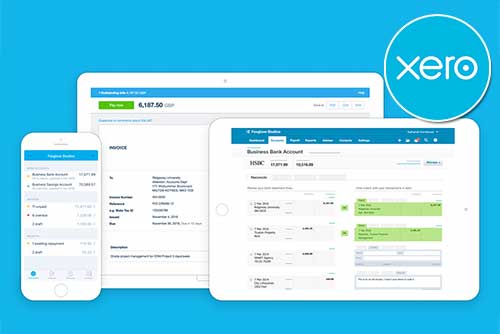What Is the Double Entry Accounting System?
The double-entry accounting system is a cornerstone of modern finance, providing a comprehensive and accurate record of every financial transaction. This system, which dates back to the 15th century, is based on the principle that every transaction has dual effects on at least two accounts. This ensures the balance of the accounting equation, making it a reliable source for financial analysis.
Understanding the double-entry system is crucial for anyone involved in business or finance. It’s not just about maintaining balance, but also about ensuring accuracy and completeness. This system provides a clear and precise record of every transaction, making it easier to track income, expenses, and the overall financial health of a business. Let’s explore the concept!
What Is Double Entry Accounting?
The double entry accounting system is a fundamental principle in the world of finance. It’s a method that ensures every financial transaction impacts at least two different accounts in contrasting ways. This system is designed to maintain the balance of the accounting equation, which states that Assets = Liabilities + Equity.
The system was developed to streamline commercial transactions and enhance the efficiency of trade.
The double entry system is based on the premise that every transaction has dual effects on at least two accounts. For instance, if a company receives cash from sales, it records an increase in cash and an equivalent increase in revenue. This dual effect ensures the accounting equation remains balanced.
The double entry system is not just about maintaining balance. It’s also about accuracy and completeness. It provides a comprehensive and accurate record of a company’s financial transactions, making it a reliable source for financial analysis.
Types of Accounts in Double Entry Accounting
The five main types of accounts – asset, liability, income, expense, and equity – each have a unique role in the financial ecosystem of a business. They help in recording the monetary value of what a business owns, owes, earns, spends, and retains. Understanding these accounts is the first step towards mastering the double-entry accounting system.
Understanding Debit and Credit
The terms ‘debit’ and ‘credit’ are fundamental and represent the two sides of every transaction, each with its unique role. Debits, recorded on the left side of a ledger, can either increase an asset or expense account or decrease a revenue, equity, or liability account. For instance, when you pay off a portion of a bank loan, it debits the liability account, reducing its balance.
On the other hand, credits are recorded on the right side of the ledger. They function oppositely to debits, decreasing asset and expense accounts or increasing revenue, equity, and liability accounts. For example, when you receive payment for a service you’ve provided, it credits the revenue account, increasing its balance.
The interplay between debits and credits is what keeps the accounting equation balanced. The total of debits and credits for a transaction must be equal, ensuring that the sum of all debits matches the sum of all credits. This balance is crucial for the accuracy and reliability of financial statements.
Asset, Liability, and Expense Accounts
Three primary types of accounts play a pivotal role in double-entry accounting: asset, liability, and expense accounts.
The asset account, as the name suggests, represents the resources owned by a business. This could range from tangible assets like cash, inventory, and equipment to intangible ones such as accounts receivable.
On the other hand, liability accounts depict the debts a business owes. These could be in the form of bank loans, accounts payable, credit cards, or customer credits.
Expense accounts are a record of the costs incurred by a business. These costs could include wages, rent, utilities, and phone bills among others. The golden rule of double-entry accounting is that for every debit in one account, there must be an equal credit in another. This ensures the balance sheet always balances, maintaining the integrity of the financial records.
The Role of Trial Balance in Double Entry Accounting
The trial balance plays is a bookkeeping worksheet that lists all the credit and debit balances of all ledger accounts. The primary purpose of the trial balance is to ensure the arithmetic accuracy of transactions. It’s a tool that helps in identifying any discrepancies or errors in the accounting entries.
In the double-entry system, each financial transaction impacts at least two accounts. The trial balance ensures that the total debits equal the total credits. If there’s a mismatch, it indicates an error somewhere in the accounting entries.
The trial balance is also a stepping stone towards the creation of financial statements. It provides a snapshot of the company’s financial position at a specific point in time. It lists all the asset, liability, and expense accounts, making it easier to understand the financial health of the business.
The trial balance is not just a tool for error detection, but it also aids in maintaining financial transparency. It’s a crucial part of the accounting process that ensures the integrity and accuracy of financial information.
How Does Double Entry Accounting Work?
The first step in the double-entry process is identifying the accounts that will be affected by the transaction. For instance, if a company makes a sale, the accounts affected could be the cash account and the sales revenue account.
Once the accounts are identified, the next step is to determine whether each account will be debited or credited. In the double entry system, every transaction involves a debit in one account and a credit in another. The debit side, or left side, of an account records increases in assets and expenses, while the credit side, or right side, records increases in liabilities, equity, and revenue.
After the debits and credits have been recorded, the next step is to ensure that the accounting equation (Assets = Liabilities + Equity) remains balanced. This is a crucial aspect of the double entry system, as it ensures the accuracy and integrity of the financial records.
The final step in the process is to prepare a trial balance. This involves listing all the accounts and their balances, with debits on the left and credits on the right. The total of the debit side should equal the total of the credit side, confirming that the books are balanced.
Your general ledger is split into two sides, the left side (debit side) and the right side (credit side).
Every transaction is recorded twice in the general ledger, once as a debit and once as a credit. This is the essence of the double entry system. The debit entry is recorded on the left side of the ledger, while the credit entry is recorded on the right side.
The general ledger is also responsible for ensuring that the total of the debit side equals the total on the credit side. This is known as the trial balance. If the trial balance is not equal, it indicates that there may be an error in the recording of transactions.
The general ledger also helps in maintaining the accounting equation. The accounting equation is a fundamental principle of double entry accounting that states that assets minus liabilities equals equity. The general ledger ensures that this equation is always balanced.
Advantages and Disadvantages of the Double Entry Accounting System
The double-entry accounting system, a cornerstone of modern accounting, is a method that records each transaction in two places, showing its dual impact on the business. This system, while offering a comprehensive view of the company’s financial health, also presents its own set of challenges. In this section, we will delve into the advantages and disadvantages of the double-entry system, providing a balanced perspective on its application in various business scenarios.
Advantages of Double Entry Accounting System
- Accuracy: The double-entry system demands high levels of precision. Every transaction is recorded in at least two accounts, which allows businesses to track income and expenses accurately.
- Accountability: This accounting system promotes better accountability. It helps establish trust across the company as every accounting entry is transparent and traceable.
- Financial Health: The double-entry system provides a clear picture of a company’s financial health. It helps in preparing comprehensive financial statements that reflect the true financial position of the business.
- Adherence to Accounting Standards: The double-entry system is in line with the accepted accounting standard. It ensures that the bookkeeping system is consistent and reliable.
- Detailed Ledger Accounts: The system allows for detailed ledger accounts. It records both sides of a transaction, providing a complete view of asset and expense account, revenue account, and account credit.
Disadvantages of Double Entry Accounting System
Here are some of the key disadvantages of the double-entry accounting system:
- Complexity: The double-entry system is more complex than its single-entry counterpart. It requires a solid understanding of debits, credits, and the accounting equation. This complexity can be overwhelming for those without formal accounting training.
- Time-Consuming: The need to record every transaction twice, as both a debit and a credit, can be time-consuming. This is particularly true for businesses with a high volume of transactions.
- Costly for Small Businesses: The complexity and time requirements of the double-entry system may necessitate hiring a professional accountant or investing in accounting software. This can be a significant expense for small businesses or startups with limited resources.
- Higher Risk of Errors: The requirement to make two entries for every transaction increases the risk of errors. Mistakes in recording can lead to an unbalanced ledger, requiring additional time and effort to locate and correct.
- Overly Detailed for Simple Operations: For small businesses with straightforward financial transactions, the double-entry system can provide more detail than necessary. This can complicate financial management without adding significant value.
Double Entry Accounting vs Single Entry Accounting
The choice between double-entry and single-entry systems can significantly impact the financial health of a business. The double-entry system, with its dual recording of transactions, provides a comprehensive and balanced view of a company’s financial standing. It’s a system that adheres to the accounting standard, ensuring accuracy and fraud prevention.
The single-entry system, with its simplicity and straightforwardness, may be suitable for very small businesses with fewer financial variables. However, its inability to provide a complete picture of a company’s financial health can be a significant drawback.
Understanding Single Entry Accounting
Single-entry accounting, as the name suggests, is a bookkeeping method where each transaction is recorded only once. This could be either a debit or a credit in one account. This system is akin to tracking your expenses using a simple tool like a pen and paper or an Excel spreadsheet.
For instance, if you pay £1,500 to attend a conference, you record the cash leaving your checking account. This method provides a straightforward way of showing the flow of one account. However, it doesn’t provide a comprehensive view of your financial health.
In the given example, the conference fee expense isn’t recorded, so it won’t appear on your income statement. This means your bookkeeper won’t be aware that £1,500 is missing – and you could end up overpaying!
Single-entry accounting is a lot simpler: much like maintaining a cash book. Each entry typically includes the date, transaction description, amount, and updated account balance. However, this simplicity can also be its downfall, as it doesn’t account for liabilities, making it less suitable for most businesses.
The double-entry system records each transaction twice, in at least two accounts. This method provides a more comprehensive view of a company’s financial health. It’s typically employed by larger businesses that have more complex financial transactions.
The double-entry system’s complexity can be a deterrent for some. However, its ability to provide a balanced view of the accounting equation is a significant advantage. It ensures that the company’s assets equal the sum of its liabilities and equity, providing a clear picture of the company’s financial standing.
The double-entry system aids in the preparation of financial statements and maintaining a trial balance. It adheres to the accounting standard, ensuring that debits and credits always balance. This not only enhances the accuracy of the bookkeeping system but also helps prevent fraud.
The Impact of Double Entry Accounting on Business
The double-entry accounting system is a fundamental tool for maintaining accurate financial records. It provides a comprehensive view of a company’s financial health, ensuring that every financial transaction is accurately recorded in the general ledger. This method, while complex, is essential for small businesses to maintain a balanced accounting equation and produce reliable financial statements.
The system’s use of debit and credit entries to represent increases and decreases in asset, liability, and equity accounts ensures a balanced book of accounts.
Get a quote
About the Author
Lucy Cohen, our Co-Founder at Mazuma, is a passionate innovator dedicated to revolutionising the accountancy industry. Over her 21-year career, including 18 years at Mazuma, Lucy has become an industry expert, contributing regularly to trade publications like Accounting Web and authoring acclaimed books such as “The Millennial Renaissance” and “Forget the First Million.” Her accolades include the Director of the Year (Innovation) by the Wales Institute of Directors and the Outstanding Contribution Award at the Accounting Excellence Awards.






















